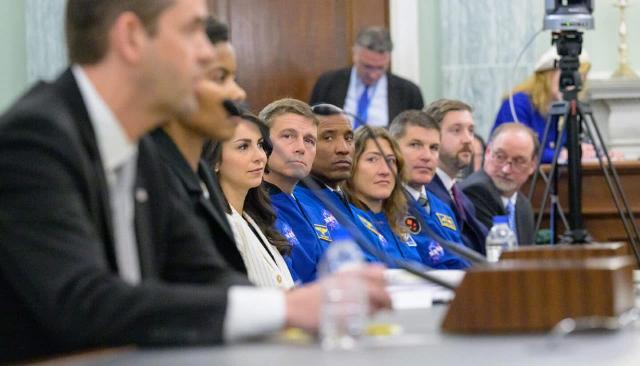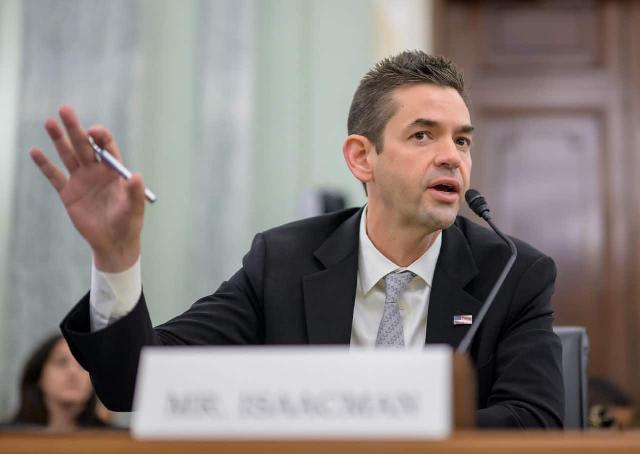Speculation about the closure of the SLS+Orion projects by the US National Aeronautics and Space Administration and their replacement with Starship turned out to be true and wrong at the same time. The plan of Jared Isaacman, the head of the agency, looks like a strange hybrid of all possible American space programs at once. It is not yet clear whether the combination of simultaneous lunar and Martian races will prevent the success of the latter.
In 2024, it became known that NASA would be headed by an unusual leader — Jared Isaakman, a billionaire and commander of the first private spacecraft crew in history, as well as the first member of a private space crew to go into outer space in a spacesuit. At the same time, information leaked to the press that Isaakman was against unproductive spending of money on the SLS rocket and the Orion spacecraft, which NASA had ordered for the return of American astronauts to the Moon. The program cost tens of billions of dollars, and each launch of the Orion spacecraft on the SLS rocket is estimated at 4.1 billion dollars.
In addition, Elon Musk previously noted that the United States does not need to "stop on the moon." It is much more rational to fly to a more interesting goal — Mars. From these words, and given the businessman's close ties to Jared Isaacman, who flew into space four times on SpaceX ships, many in the United States concluded that the country's lunar program would be curtailed in favor of the Martian one.
Now, Isaacman has addressed members of the U.S. Senate Committee on Commerce, Science, and Transportation and answered their questions about the future of the space program. He stated that he does not plan to curtail the SLS and Orion projects right now: this is the fastest way to continue the lunar program, although in the long run it is not the most effective.
The committee members asked how the NASA administrator plans to divide the agency's funds and forces between the lunar and Martian programs. Isaacman referred to China's efforts to land a man on the moon by 2030 and said that the United States cannot allow China to get ahead of them in this decade. In his opinion, the American astronauts should be returned to Selena before the Chinese land there.
The head of the committee, Republican Senator Ted Cruz, insisted on the importance of not just returning to the moon, but also creating a base — first in lunar orbit, and then on the surface of a natural satellite. Isaacman diplomatically avoided answering the question of whether he was planning a lunar station, which NASA conceived many years ago. He was also cautious about a long-term base on the moon, noting that the agency's long-term priority would be to land astronauts on Mars.
This ends speculation among industry observers about the alleged curtailment of the Artemis lunar program in favor of an expedition to Mars. It turns out that the new head of NASA aims to make Americans both the first on the Moon in the 2020s and the first on Mars in the 2030s. At the same time, Isaakman did not identify any major cuts in the agency's structure, although they had previously been openly discussed about their need. NASA has a dozen field centers in different states of the United States, which is not bad for increasing the number of jobs, but excessive in terms of the tasks facing the organization.

Ten astronauts, six from private crews and four from future NASA lunar crews, attended the meeting.
Image source: NASA, Bill Ingalls
Many field centers were inherited by the organization from the von Braun era, when ships and missiles were independently designed there. Nowadays, promising ships and rockets are being developed by SpaceX, and projects with pedigree from NASA (SLS and Orion) have no prospects. According to Isaakman, they will be used only in the coming years (2026-2027) to return to the moon as quickly as possible. Then the need for them will disappear due to the huge price and limited opportunities.
At a meeting with the future head of the agency, Democratic senators tried to find out the degree of coordination of his plans with SpaceX projects. In response, Isaacman stated that he had not discussed this with Musk. However, he did not answer the question of whether Musk was present at his meeting with Trump at the time of Isaakman's appointment to the new post.
The performance leaves an ambivalent impression. On the one hand, the new head of NASA is acting as a skilful politician, avoiding conflict with the Senate, which is openly lobbying for additional spending in the space industry. On the other hand, it will be difficult to fulfill at the same time extremely ambitious plans to return to the moon and prepare for a flight to Mars. This is quite expensive, especially without cutting the frankly inefficient and at the same time too expensive SLS programs (for its corrupt component it has long been called the Senate Launch System), Orion and many NASA field centers.

